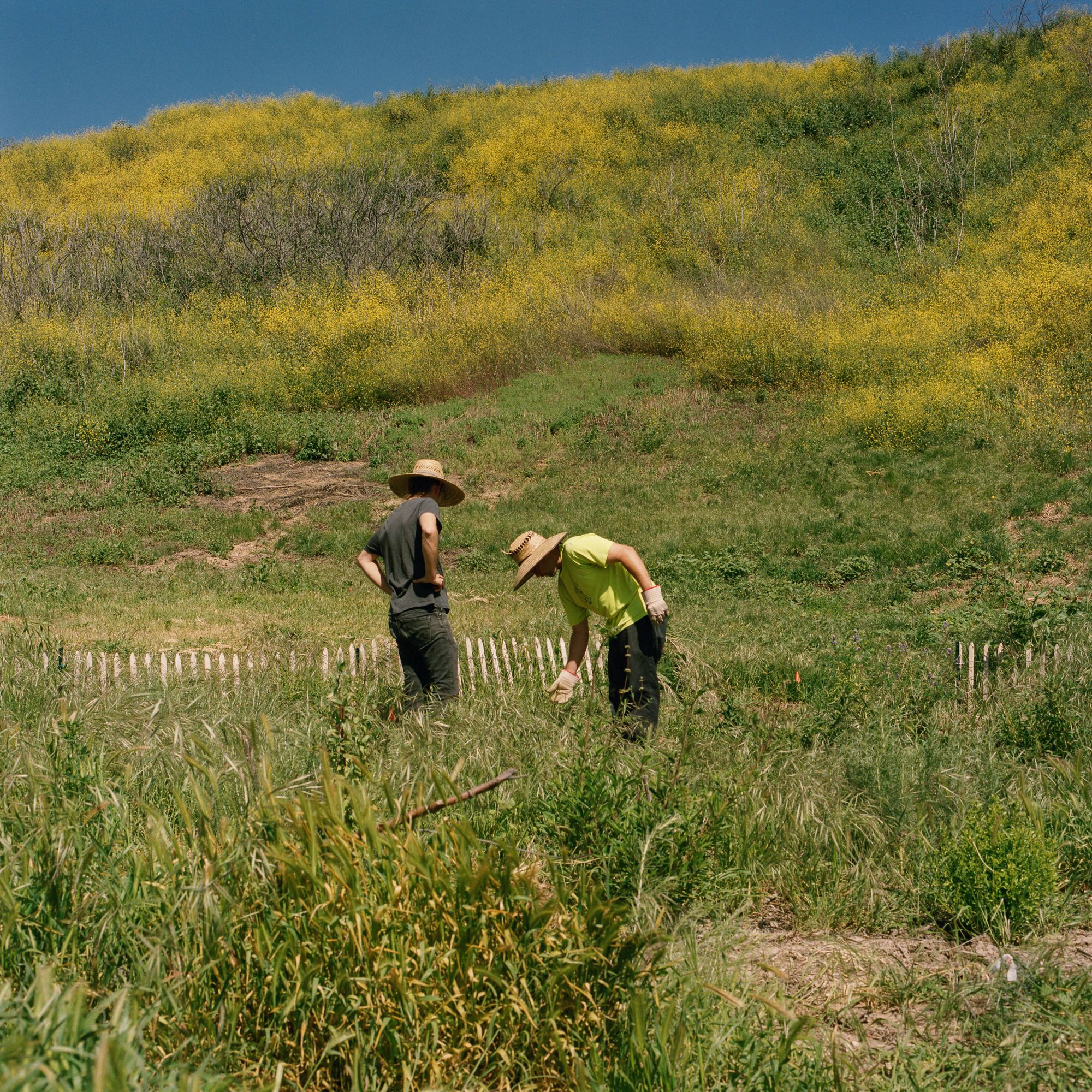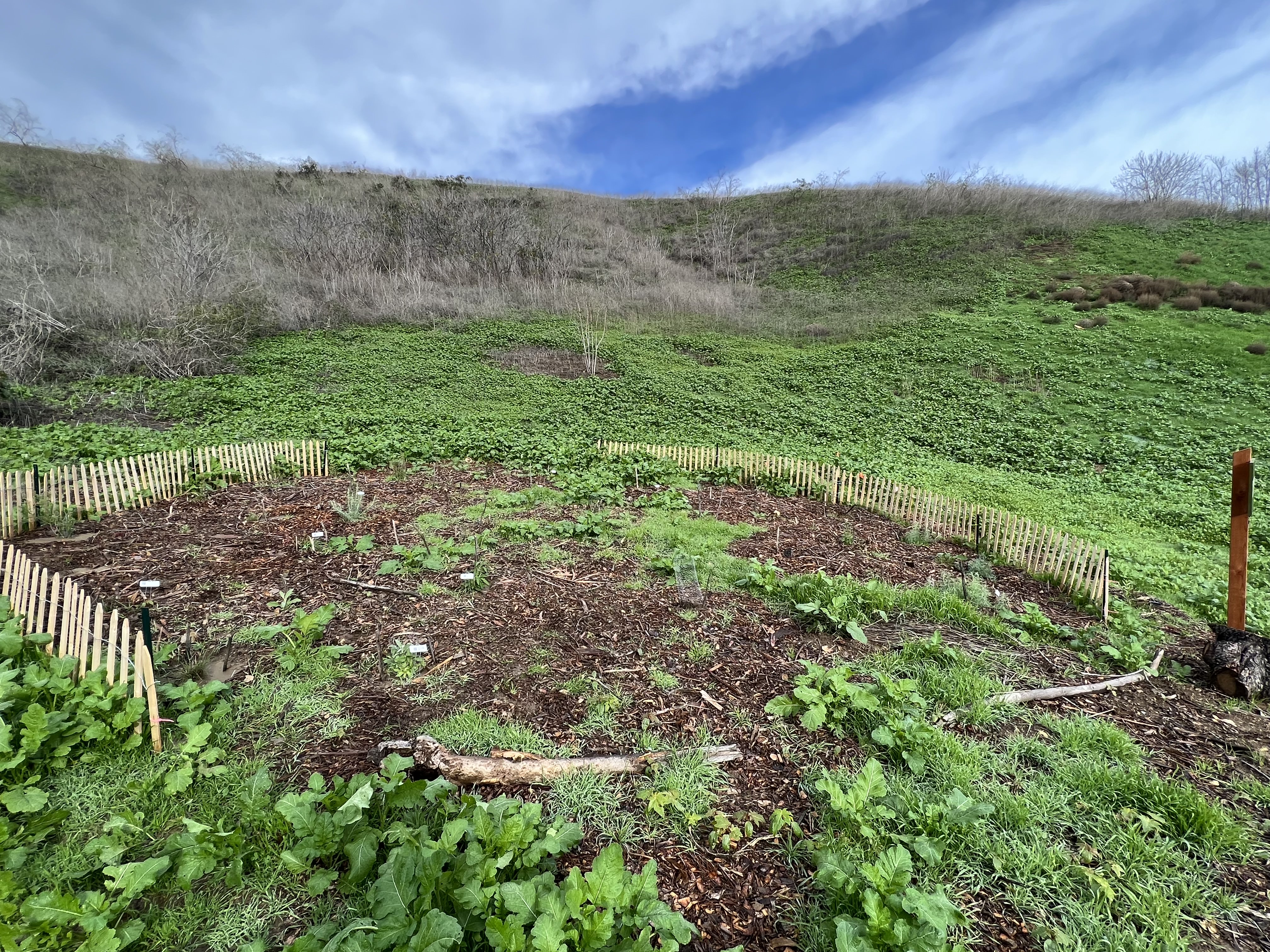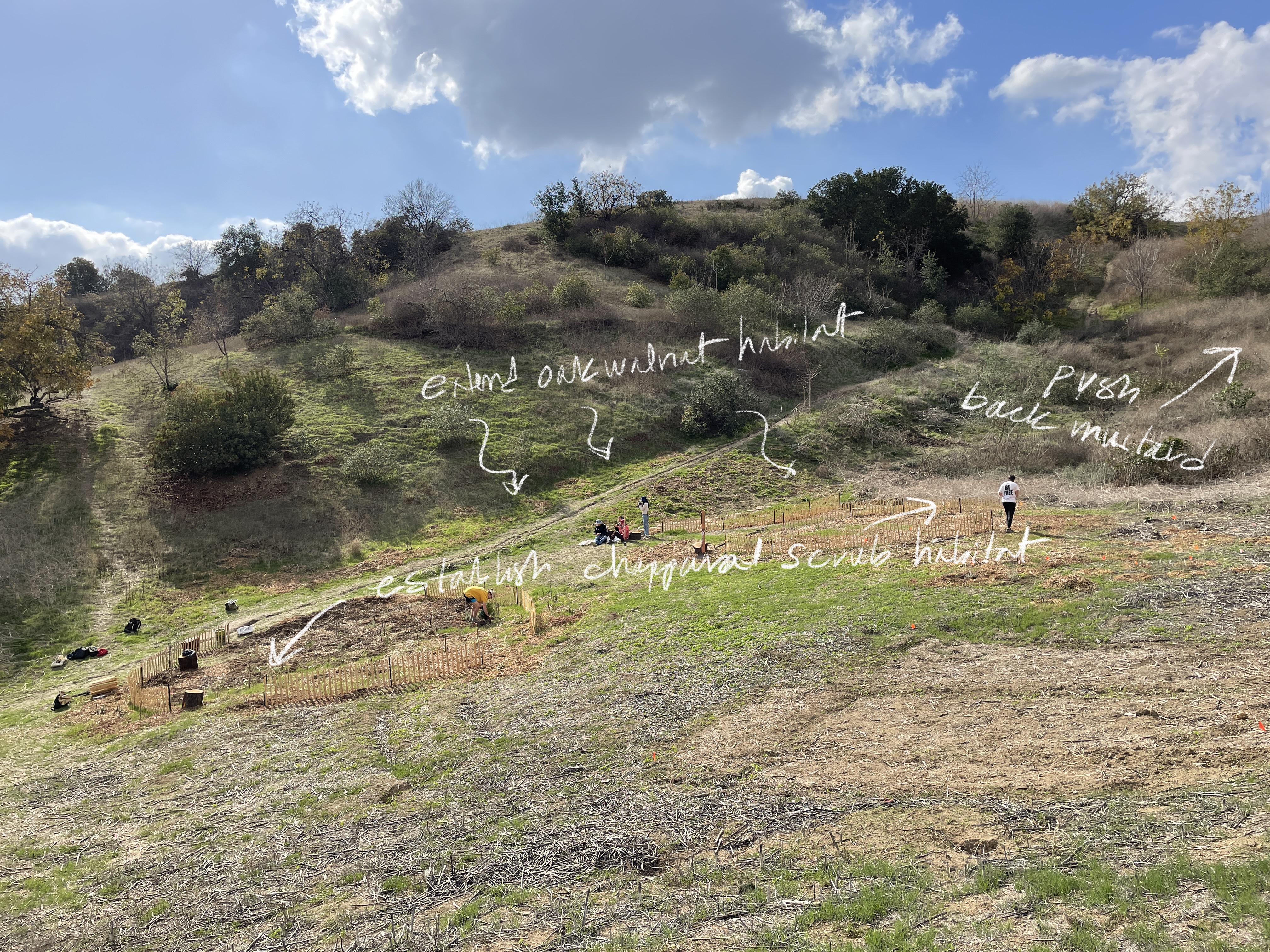IT’S RAINING OAKS, AND OTHER UPDATES
Elephant Hill Test Plot / June 08 2023
By Joey Farewell
El Sereno neighbor
To cut to the punchline, the plots are thriving! The gods blessed us with one of the wettest winters in the past 30 years, with local gauges showing between 36-38” of total rainfall at the bottom and top of the hill, respectively. As the designated Test Plot Meteorologist, I (Joey) connected with staff at the Los Angeles County Department of Public Works, which provided official precipitation data going back to the 1996/1997 season for their nearby rain station in Alhambra. According to their data, this year of years beat all but one wet season (the vaunted 2004-2005 winter), with a total of 36” of precipitation at the Alhambra gauge since October. Incredible! Read on below...
Elephant Hill Test Plot / June 08 2023
By Joey Farewell
El Sereno neighbor
To cut to the punchline, the plots are thriving! The gods blessed us with one of the wettest winters in the past 30 years, with local gauges showing between 36-38” of total rainfall at the bottom and top of the hill, respectively. As the designated Test Plot Meteorologist, I (Joey) connected with staff at the Los Angeles County Department of Public Works, which provided official precipitation data going back to the 1996/1997 season for their nearby rain station in Alhambra. According to their data, this year of years beat all but one wet season (the vaunted 2004-2005 winter), with a total of 36” of precipitation at the Alhambra gauge since October. Incredible! Read on below...





What has this meant for our local El Sereno Test Plot? Mostly good things! If you recall, we installed over 200 native plants back in November 2022. Below is the complete plant list we planted in November, mainly sourced from North East Trees as well as donations from TreePeople, a few neighbors, and wildflower seed from California Native Plant Society.
We’ve seen deep establishment of many of our native chaparral and scrub plants, including black sage, white sage, sagebrush, fuschia, and monkeyflower. Remarkably, we have not had to water these plants at all. This is because we had a powerful storm drop over 2” immediately after planting in November, which was then followed by consistent, regular rainfall and cold temperatures all the way through April. Since then, we have seen below-average temperatures, heavy fog, and occasional drizzle. The result is a stunningly efficient establishment of our chaparral plants –– they are already deeply rooted, large in size, and show no signs of drought stress. Conversely, the only species we’ve had issues with thus far is California buckwheat. Generally, Eriogonum species are quick to establish and grow in loamy California soils, but we hypothesize that the combination of clay soils at the Test Plot site and extreme rains have stunted the growth of the buckwheat, leaving them dormant (at best) and yellow and sickly (at worst). Time will tell how the buckwheats react to the summer heat, but we are optimistic that they will rally once the soil fully dries out and the roots are able to breathe a little easier.
Our slate of trees is also thriving, even in unexpected ways. We planted a variety of one gallon native oaks, black walnuts, and larger tree-like shrubs like Elderberry and Lemonadeberry. All are doing really well and showing few signs of stress, if any.
And speaking of oaks and walnuts, with the consistent wetting rains and cold air, the many acorns and walnuts we direct-seeded into the north facing slope are germinating en masse! They started sprouting in January, and since then we’ve counted dozens upon dozens of Quercus agrifolia (Coast Live Oak / Whet) and Juglans californica (Southern California Black Walnut / Takaape' Waashut) both within the plots and on our north-facing slopes. These acorns and walnuts will set deep taproots that may give them a superior chance of drought resistance and longevity, especially in an era of climate change, compared to those we planted from containers.
The only problem with this many baby trees coming up has been flagging them for watering and protection –– but thankfully, that’s where the kids from El Rio Elementary School in Lincoln Heights came to the rescue. We recently held a school hike and oak-marking activity at Elephant Hill, where the kids used bright orange flags to locate and mark the many oak seedlings coming up all over the Test Plot. To give you an idea of how just how many oaks are coming up, we actually ran out of flags (and there were at least 25 left in that bag…).
Moving forward, while there is a now a robust presence in the Test Plot basin itself in our little valley at Elephant Hill, growing in tandem with a community of Black walnuts and oaks, coffeeberry, poison oak and monkeyflower on the adjoining north facing slope, the upper flat and southeastern bowl areas have been largely dominated by mustard, european grasses, and castor bean.
We hope that our early fast adapters will get established and start creating mycorrhizal relationships that better support a coastal scrub and woodland ecosystem and allow native habitat to compete better with the invasives surrounding the plot. In truth, this is already happening –– oaks and walnuts (and even Western Vervain, a riparian plant) are volunteering in places that were dominated by mustard this time last year. Where there was once a stand of impenetrable mustard, we’ve already got baby trees in our baby Test Plot. Hard to imagine a better first year at the Hill.
As for next year? We hope to plant more wildflowers (inspired by the Elysian Park Test Plot Superbloom) and native plants (especially grasses) in the fall to take advantage of the nascent El Niño brewing in the Pacific Ocean, which generally (but not always) portends above-average precipitation in Southern California. In fact, many of the wettest winters in Southern California history are associated with El Niños –– but you’ll have to read our Test Plot Weather Update coming soon for more on that!
Other Assorted Stuff
Another update we have is about MOWING. Each year in May-June, LA City, which owns the parcels of land around the Test Plot (on MRCA land), hires a contractor to mow the grasses and mustard for fuel reduction. We were pleased to see that they mowed around the fences, respecting our marked plantings and even protecting pockets of poppies and other natives. Hopefully, each year the area they need to mow will shrink.
Planting Strategy
We planted four areas:
1) walnut and oak acorns and some 1 gallons along the north facing slope down to the toe of the slope where it drops into the east-facing basin – as mentioned above, these lil guys are taking off.
2) in the basin, coastal sage scrub plants in an upper plot that is largely flat – this plot was sheet mulched with cardboard. Initially these plants as a general rule, did not grow as rapidly as the lower plot, though they are the same species mix.
3) a bit further down/east, a lower plot with a stronger eastern aspect
4) along the edges – coyote brush, mulefat, laurel sumac and other tough shrubs that will hopefully hold their own against the mow edges.
Plant List (November 2022)
| Juglans californica | SOCAL BLACK WALNUT |
| Quercus agrifolia | COAST LIVE OAK |
| Quercus berberidifolia | SCRUB OAK |
| Quercus lobata | VALLEY OAK |
| Umbellularia californica | BAY LAUREL |
| Acmispon glaber | DEERWEED |
| Artemisia calfornica | CALIFORNIA SAGEBRUSH |
| Asclepias fascicularis/Stipa pulchra combos | NARROW LEAF MILKWEED |
| Baccharis pilularis | COYOTE BRUSH |
| Baccharis salicifolia | MULEFAT |
| Diaplacus longiflorus | STICKY MONKEYFLOWER |
| Epilobium canum | CA FUSCHIA |
| Eriogonum fasciculatum | CA BUCKWHEAT |
| Frangula californica | COFFEEBERRY |
| Hesperoyucca whipplei | CHAPARRAL YUCCA |
| Lupinus longifolius | LONG LEAF BUSH LUPINE |
| Malosma laurina | LAUREL SUMAC |
| Rhamnus ilicifolia | HOLLYLEAF REDBERRY |
| Rhus integrifolia | LEMONADE BERRY |
| Salvia apiana | WHITE SAGE |
| Salvia mellifera | BLACK SAGE |
| Salvia spathacea | HUMMINGBIRD SAGE |
| Sphaeralcea ambigua | APRICOT MALLOW |
